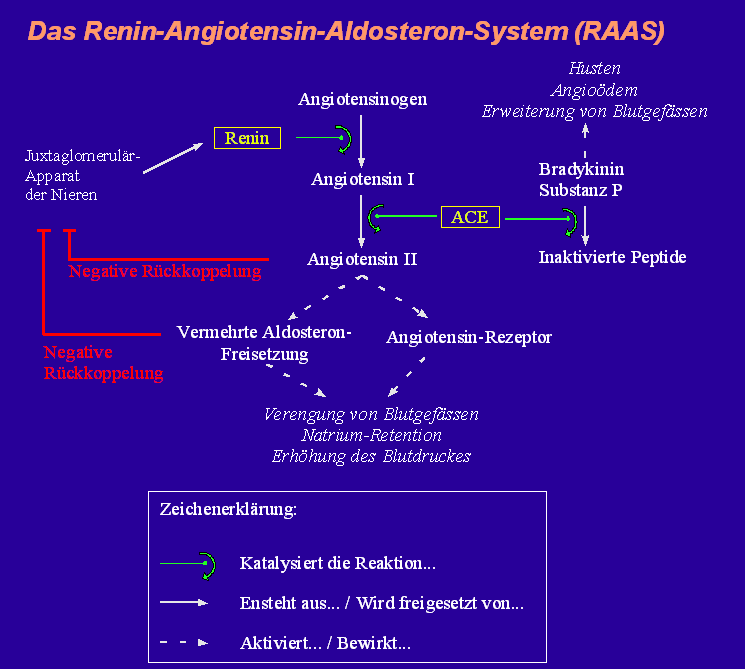Renin-Angiotensin-Aldosterone System (RAAS)
Important medium-term regulatory system of blood pressure via salt, electrolyte/salthousehold and plasmavolume based on reninrelease and angiotensin II formation.
The 'Renin-Angiotensin-Aldosterone System regulates the fluid and electrolyte balance and thus has a decisive effect on arterial blood pressure. All players of the renin-angiotensin-aldosterone system interact closely with each other. A series of enzymatic reactions leads to the physiologically highly effective Angiotensin II.
At the beginning of the RAAS stands Renin. It is a protease produced mainly in the juxtaglomerular apparatus and there in the epitheloid cells of the vas afferentia. Renin cleaves the peptide angiotensionogen formed in the liver into angiotensin I. This is then converted into highly active angiotensin II by the conversion enzyme (angiotensin converting enzyme; ACE, formed in the pulmonary tract).
Above all, angiotensin II has a strong vasoconstrictor effect - this occurs via the central activation of the sympathetic nervous system. The result is an increase in blood pressure and thus an increased blood flow to all organs (including the glomeruli, from which the original stimulus originated).
Source: Wikipedia / D. Varga / CC BY-SA 3.0
Angiotensin II also has the following effects:
It causes an increased aldosterone release from the adrenal cortex and this in turn causes an increased reabsorption of sodium and chloride ions and an increased excretion of potassium ions in the renal tubules. For osmotic reasons, more water is also reabsorbed, which leads to an increase in the volume of blood and thus additionally increases blood pressure.
It also causes an increased release of the antidiuretic hormone (ADH) from the posterior lobe, resulting in increased reabsorption of water into the renal tubules and vasoconstriction. These effects also increase blood pressure.
Angiotensin II also increases the sensation of thirst
https://de.wikipedia.org/wiki/Renin-Angiotensin-Aldosteron-System (Wikipedia CC-by-sa-3.0)

